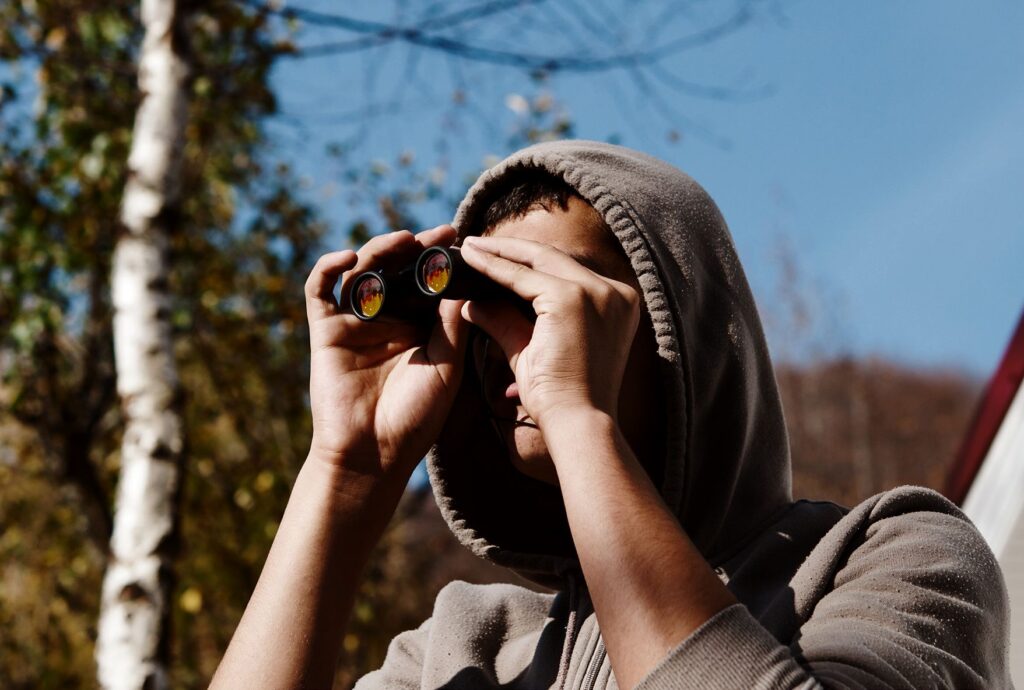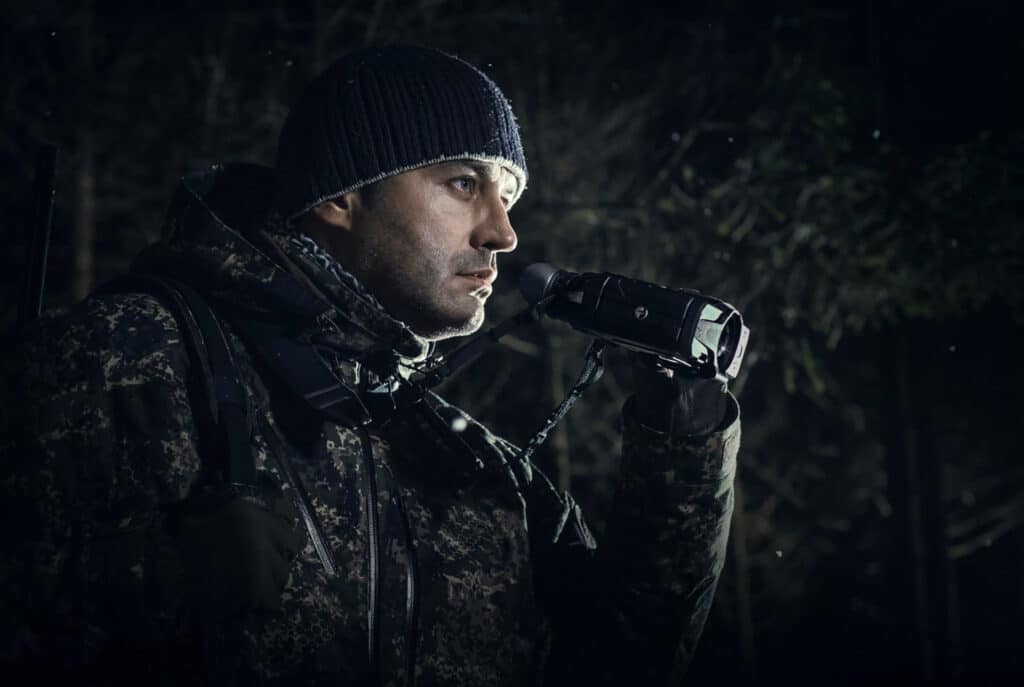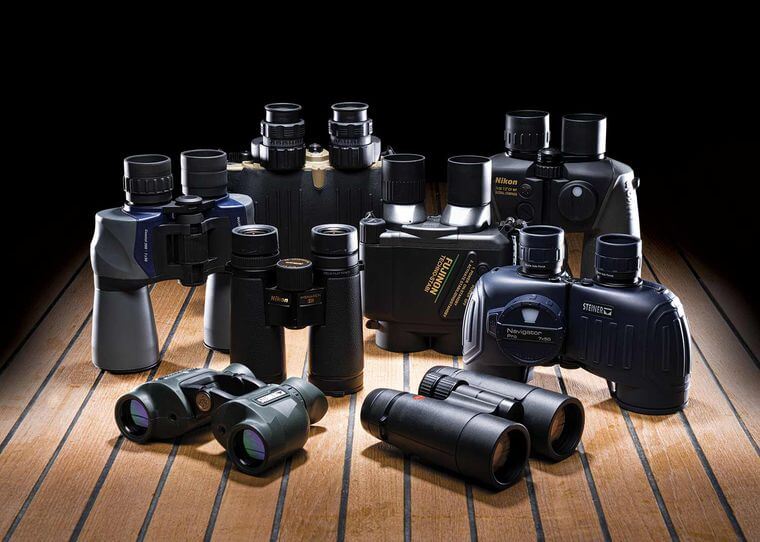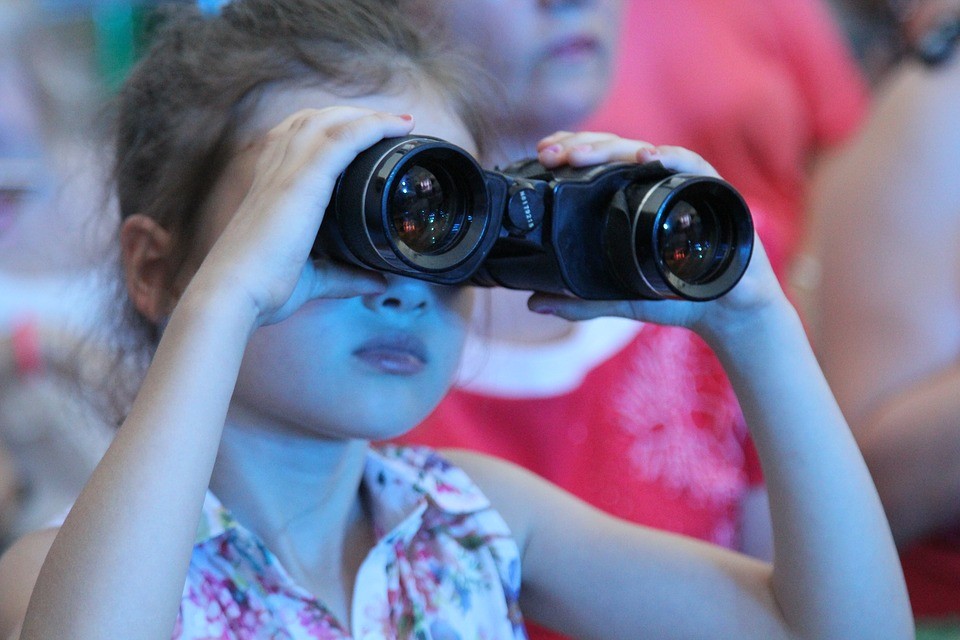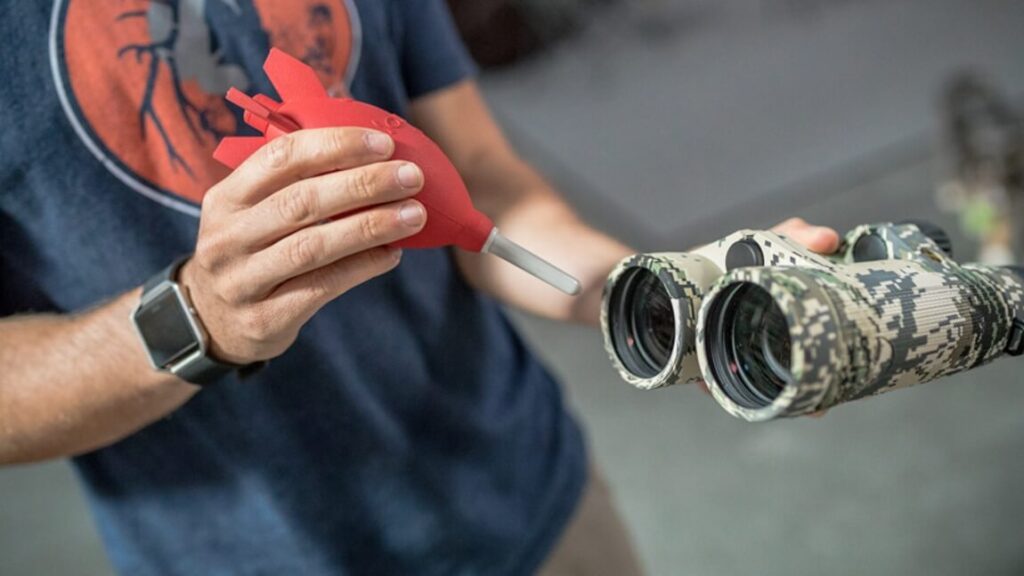

Thanks to binoculars you can stare a lion right in the eyes or witness the birthing of an elephant. They take you to the center of it all from a safe and comfortable distance. They have been such instrumental tools in various applications from surveillance and sporting events to hunting, birding and star gazing.
So, how do binoculars work? Just how do they enable us to see objects in far distances with incredible detail? Well, typically, binoculars are 2 telescopes Trusted Source Telescope - Wikipedia A telescope is an optical instrument using lenses, curved mirrors, or a combination of both to observe distant objects, or various devices used to observe distant objects by their emission, absorption, or reflection of electromagnetic radiation. en.wikipedia.org mounted side by side, one for each eye. If you get to understand how a telescope works, then you will have wrapped your head around binoculars’ functionality. Read on to discover the fun facts behind the science of optics and clever lens tricks that binoculars are based on. You’ll also get some useful information about the different types of binoculars while at it.
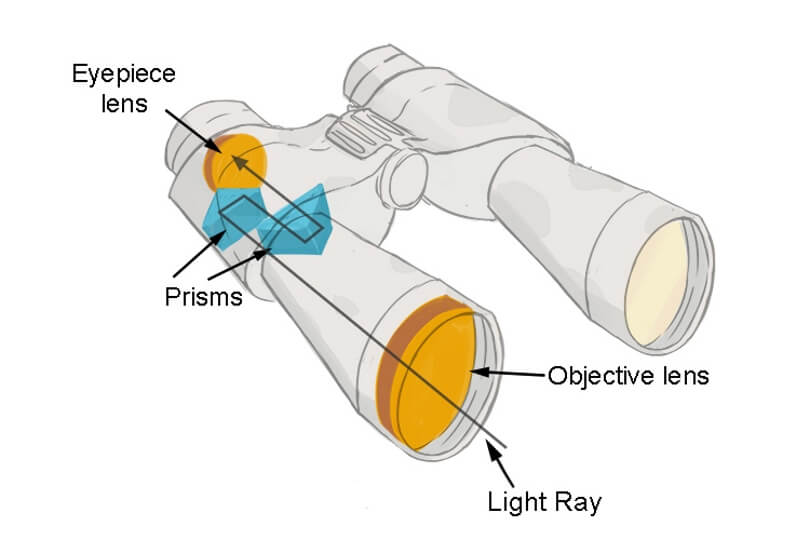
Lenses are a key part of binoculars. A lens is a curved piece of glass almost shaped like a lentil. In fact, the word lens originates from the Latin name for lentils. There are 2 types of lenses: convex/convergent, and divergent/concave lenses.
Convex lenses are curved like a dome and their middle is thicker than their outside. When light rays hit a convex lens, they bend towards the middle as if the lens is sucking them in. Put simply, convex lenses bring distant light rays into a focus. They are also known as converging lenses because they bring light rays together. Since they make objects appear bigger they are used for things like magnifying glasses.
Concave lenses on the other hand have a thinner middle than the outside. They cave in the middle, hence their name. When light rays come into a concave lens, they spread out in all directions. This why it is also known as a diverging lens.
Now that you have understood how different lenses work you can tell by now the kind that is used in binoculars. Binoculars are meant to help you see things in the distance. Convex lenses are the most appropriate in this case. Binoculars use 2 convex lenses: the objective and eyepiece lenses.
The downside to using convex lenses to refract light is that the light rays can cross over and result in an upside down image. It is mistakenly assumed that the eyepiece corrects the issue but it doesn’t. This is where prisms come in. They rotate the image for your viewing pleasure. A prism is large wedge of glass that rotates and reflects an image. One prism effectively rotates an image at 90 degrees. This means 2 prisms are needed per tube to correct an image. A pair of binoculars will therefore need 4 prisms. There are 2 types of prisms; roof prisms and porro prisms.
Porro prisms are more popular and affordable than roof prisms. They are much older than roof prisms because they were used with the first modern binoculars. However, they are bulkier than roof prisms. Roof prisms, on the other hand, are more expensive but compact and portable. They are expensive because they are complex and hard to manufacture.
Binoculars have 2 convex lenses, one in front of the other. The first lens; the objective lens, catches light rays from a distant object then focuses it behind the lens. It is called the objective lens because it is nearest to the object you are looking at through the binoculars.
The second lens; the eyepiece lens then picks up the image and magnifies it. The two lenses in a closed tube make a telescope. Pretty simple huh! You can even make your own telescope as long as you have a few magnifying glasses and a cardboard tube to wrap around them. Binoculars are just 2 telescopes hinged together, one for each eye.
This is a measure of the area you can view with your binoculars. It is measured at 1000 yards. A higher magnification gives you a small field of view. When you zoom in, you see your target in great detail but the area around it becomes smaller. When you zoom out, you don’t get a detailed view but the view area becomes bigger.
If you intend to use your binoculars to see moving targets then opt for a large field of view. It would be perfect for hunting, birding or nature watching. A small field of view would be perfect for surveillance, or getting an up-close look when birding or hunting.
Almost all binoculars feature a large center ring that can spin to focus the barrels all at once. It helps in focusing in on a target object to get a clear image without a hassle.
Some binoculars also have a diopter adjustment ring that allows you to focus each barrel separately. This not only allows you get the sharpest focused image but also allows you to compensate for differences between your eyes.
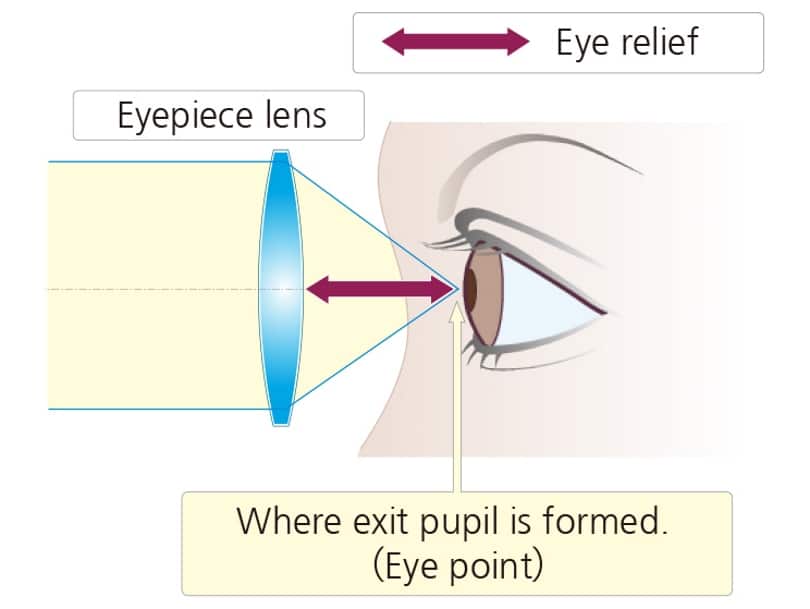
Eye relief is a crucial aspect to consider if you wear eye glasses or any kind of eyewear. With an eye relief too small, you won’t have enough room to get close to see the target without your glasses hitting the eyepiece. If you wear glasses, be sure to go for binoculars with at least 11mm of eye relief.
Some models even come with adjustable eyepieces that allow you to set the eye relief to your preference. Just remember that if you wear glasses it should never be less than 11mm.
This is the width of the light beam that comes through the eyepiece. It is the small round dot of light in the eye pieces that you see when you hold the binoculars away from your face. A bigger exit pupil is better because you get a brighter image. It is especially important if you intend to use your binoculars in low-light conditions. You wouldn’t be able to see images clearly in low-light conditions with a small exit pupil.
To determine the exit pupil of your binoculars, simply divide its objective lens by its magnification. For instance, if you have an 8X42 set, then divide 42 by 8 to get an exit pupil of 5.25mm.
You must be wondering what the numbers in binoculars mean. What does 10×42, or 12×25 mean on a set of binoculars? The first number before the x is the binoculars’ magnification level. Therefore, a 10×42 set has a magnification level of 10x. This means that any object that you see through the binoculars is magnified 10 times than when you look at it with your naked eyes. You can also think of it as being 10 times closer.
The second number after the x symbolizes the objective lens size in millimeters. So on a 10×42 set, the objective lens is 42mm in diameter. The larger the objective lens the better. A larger objective lens allows in more light to give a sharper and brighter image. It is also perfect for low-light conditions. However, it’s more of a tradeoff because a set of binoculars with a large objective lens diameter is big and bulky.
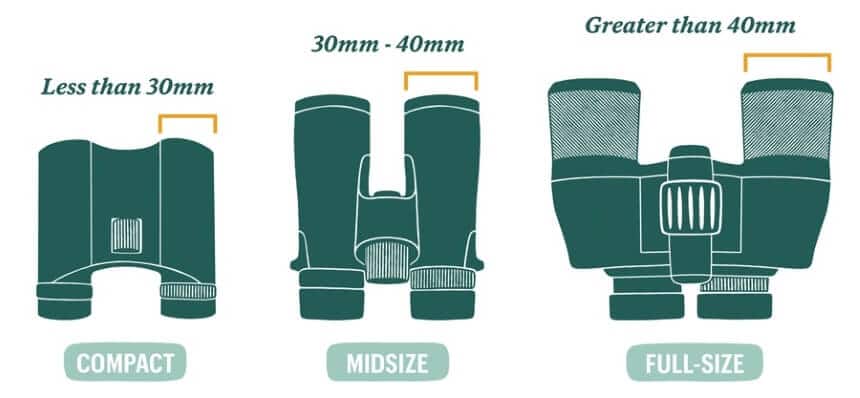
These are great for mobile adventures that require you to move a lot when holding the binoculars. They are lightweight and can easily fit in any of your luggage, whether you are a full-time backpacker or an occasional birding enthusiast. The only downside to these binos is that they aren’t the best in situations where magnification is required.
These are not so heavy and not so bulky. They are the ‘happy medium’ of binoculars. With mid-size binos, there is a wide range of choices and their magnification is usually anything between good and excellent depending on the brand and model.
These are the largest and bulkiest but most powerful. If you need a powerful set of binos this is your prime option.
For you to choose the best set of binoculars for yourself, you must know what’s available. There are different types of binoculars and each of them has a specific strength over the other.
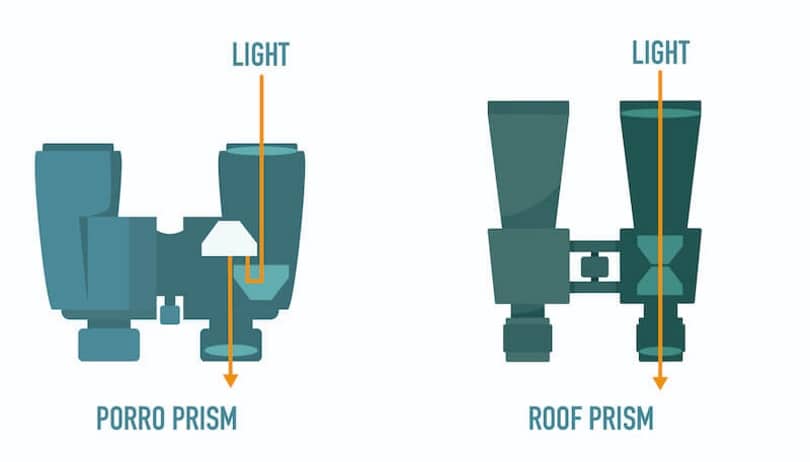
Roof prisms binos produce a bright and sharp image with much higher magnification power because they feature a series of convoluted pathways through which light from your target passes and bounces before reaching your eyes. Roof prism binos are the best binoculars for wildlife viewing. They are popular for birding and hunting.
Porro prism binoculars are the original style of binoculars first invented in the 19th century. They work by sending light from the objective lenses through a pair of triangular-light catchers. The movement then amplifies and inverts the light to give you a sharp magnified image of your target.
Porro prism binoculars are big, bulky and cumbersome because of their zigzag design but they provide a clearer 3D image and a greater field of view than the roof prisms. They are also much cheaper to produce because they are simpler in design. Prism binoculars are mainly used for scouting, sporting, astronomy and hiking.
Galilean binos get their name from Galileo Galilei’s first instrument used for astronomical observation. They feature a similar structure found in Galilei’s astronomical instrument. These binos have convex objective lenses and concave eyepiece lenses.
They can be made lightweight and compact because no prisms are used. However, they don’t have a wide field of view and their maximum magnification is limited to 4x. Also, the peripheral areas of their field of view is usually likely to be out of focus.
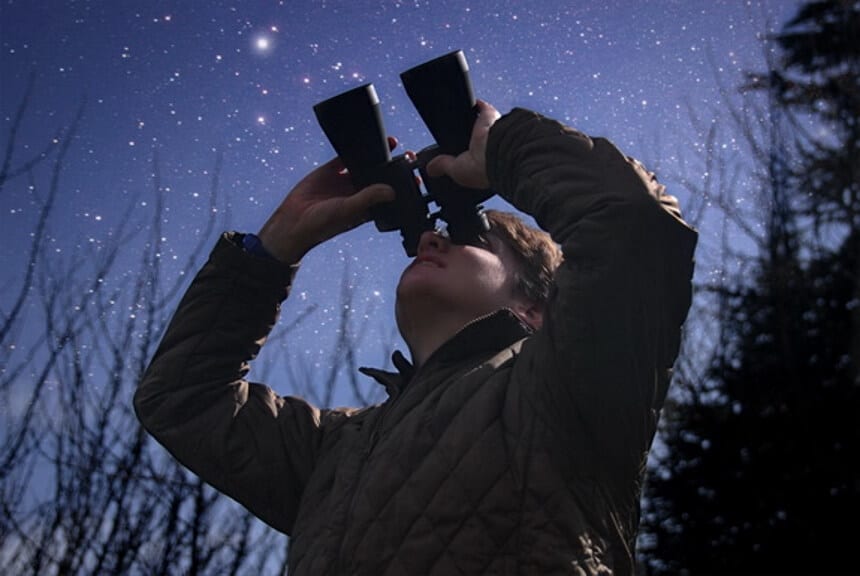
There are instances when you want to trace quick-moving celestial bodies like a meteor shower which a telescope cannot do. A set of astronomy binoculars would come in handy at detecting and viewing night-time objects in the sky. There are different types of astronomy binoculars; from compact and lightweight one that can easily fit in your pocket to large cumbersome and costly ones that need a tripod like a telescope. The larger models usually give a larger field of view than the typical telescope.
These are designed to be in and around water. They have a large objective lens and wider ocular. Their field of view is large, hence they have a lower magnification. When you are in the high seas or you go whale watching you are going to need a set of binos with a large field of view.
A high magnification would cause a shaky image with the slightest hand movement and the marine isn’t the steadiest place you can be.
All marine binoculars are fog and waterproof and some models are even designed to be used under waves. The only downsides to these binos is that they are more expensive than the regular binoculars and they can easily get lost if not made with a floatation strap.
According to experts reviewers and some users the Bushnell Marine 7x50mm Porro Prism Binocular are the best air of marine binos that money can buy. They are highly acclaimed because of their buoyant, waterproof and corrosion-resistant build. They also feature a unique and durable rubber armor grip that acts as a shock absorber.
Standard binoculars are virtually useless in low-light conditions. Night vision binos are specially designed to be used in the nigh-time or in very low-light conditions. They have electronically assisted optics that use the little available light in your surroundings and amplifies it through a series of photo-enhancing components. When the process is complete, you get a reasonably clear image that can help you navigate the dark.
They are widely used for surveillance, nighttime hunting, wildlife observations and spelunking. The ATN BinoX 4-16x65mm Digital Binocular is the slickest set of night vision binos according to most to reviewers. They have multiple advanced features that make them ideal for myriad hobbies.

These eliminate second guessing and reduce human error effects like shaky images immensely. They are perfect for instances where a lot of movement happens like sports viewing, birding, and hunting. They also have a premium price tag.
High-powered binoculars are popular among astronomers. They are highly preferred for their portability and incredibly exaggerated levels of magnification. The high magnification levels allow you to see for very long distances. Because of the extra magnification, the binos are big and bulky. Other than astronomical viewing, they can be used for any type of long distance viewing.
Auto focus Binoculars are designed to always be in focus. Therefore, they are extremely easy to use. They are somehow similar to a GoPro camera as they have a fixed depth of field. This is what keeps everything in focus.
Tripod Mounted Binoculars are highly convenient as they let you take the hands-free approach by mounting them on a standard tripod. You might get too tired and start experiencing image shake and this is when the tripods come in handy.
Mini or foldable binoculars are the best binoculars you can get for yourself when portability is on top of your list. They fold down into a small and easily transported package that you can stuck into your cramped packs. However, they aren’t as powerful as the full-size binoculars.
Wide Angle binoculars have the widest field of view. They allow you to spot objects in large and open areas without a hassle. They are highly used for watching sporting events and spotting creatures.
Opera glasses are probably the last type of binos that can come to anyone’s mind. Opera glasses are specially designed to be used in the theater, for watching productions, opera or musical performances. Some theaters are so big that people are forced to sit far where they can’t catch all the nuances that musicians and actors put into their crafts. The opera glasses allow you to catch even the slightest movements made.
Opera glasses sound so recent, but they have been around just as long as the modern binoculars have been. They are also known to be the most stylish set of binoculars.
The science behind binoculars’ functionality is pretty basic. Binos are simply 2 telescopes mounted side by side for each eye. And, how exactly do binoculars work? Each of the telescopes has an objective lens and an eyepiece. The objective lens brings in light and captures the image which is further magnified by the eyepiece lens before you can view it. We have covered the process in greater details, such that when you buy the best 8×32 binoculars you will know exactly what happens for you to see the bright and clear image from a distance through it.
Before buying a set of binoculars, you must consider all your options in terms of size and the purpose for which each of the variations out there is designed. If you are a hunter or a birder, then you will need a set with a wide field of view and if you intend to go snorkeling or diving to watch whales then you are better off with a set of the best marine binos.
